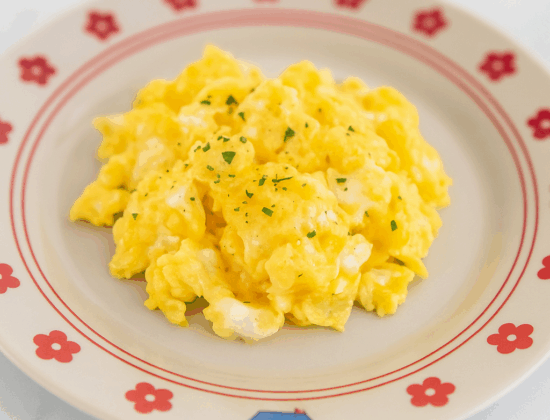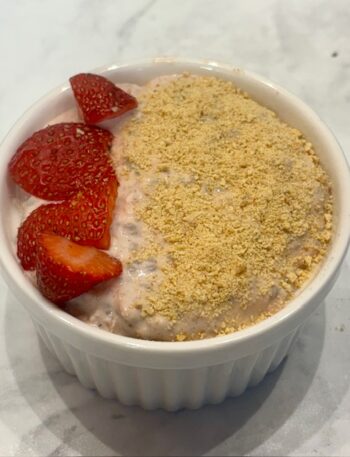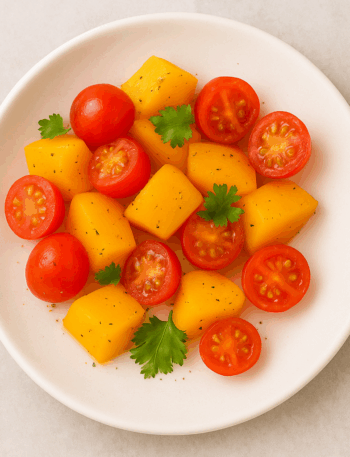(This is the first in a series of tutorials on how to cook eggs for toddlers. This blog focuses on eggs of the scrambled variety; you can find instructions and ideas for steaming eggs here, putting eggs to work for dinner here, and how to create your own egg dishes here.)
If there is a single food item that should never be absent from your fridge, it’s eggs. They’re a key ingredient in a majority of toddler-friendly recipes; eggs for toddlers are a ke dish on their own, often right from the start of consuming solids. They’re nutritional powerhouses, easy to eat, beloved by babies. They’re simple; they can be complex. They evolve with your child’s palate.
That doesn’t make them easy, however. Eggs, you see, have developed a reputation: they’re challenging and unforgiving, the ingredient and dish even proficient and professional cooks often mess up. Indeed, there’s a lot that could go wrong when you cook eggs for toddlers: they break easily when moving; they can overbrown quickly; they can be downright boring. By the time you finally figure out how to cook eggs for toddlers, your child’s tastes and texture preferences will of course change; you’ll have to learn how to cook eggs for him/her all over again.
A pro tip, then, because the above happened to us: identify and master an all-day/every-day method of how to cook eggs for toddlers that your child will consistently want to eat. Consider it Plan E: your go-to when it’s breakfast time and you don’t know what to make; or when your child isn’t eating what you prepared; or, when he/she doesn’t want anything else but eggs. In other words: you gotta know what Dad’s Eggs are going to be so your child can ask for them by name.
Now, there is no single right answer here; your child will be the judge of that. But think of what follows as a cheat sheet for how to cook eggs for toddlers: three delicious and easy approaches to scrambling eggs that can power you through the first months of solids, the evolution of your child’s palate, and/or to and through your toddler years, respectively. (Note: summaries of the technique follow; click the title links to see the full recipe!)
When You Want Cloud-Level Fluffy Eggs
If you and/or your child like ‘em soft and supple, the trick is a combination of sauteing and steaming. Beat two eggs until yolk and whites are fully mixed, then add in a small splash of water. Heat a pan at Medium til hot, then pour in a small amount of oil or butter at center. Pour in your egg mixture and, with a rubber spatula, immediately push the edge of the eggs to the center, such that the eggs appear folded on top of one another; once done, put a lid on your pan and reduce the heat to Low. Cook until set, which should be in about 60-90 seconds.
When You Need the Fastest Eggs in the World
You can get eggs on the table in under five minutes by scrambling the way the Italians do. Heat a small pan on Medium-High; while it warms up, mix egg with a small splash of milk, breast milk, or formula. When the pan is hot, put in a swirl of olive oil, give it 10-20 seconds to heat, then pour in the egg mixture. Here’s where things move fast: with a spatula, mix and twirl the egg mixture, and do not stop until it solidifies into curds. As soon as the eggs are set, remove from heat; you can top with a bit of salt and/or seasoning as needed.
When You Want Creamy AND Higher Protein Eggs
Dairy–be it yogurt, cottage cheese, or any soft and creamy cheese–is your friend yet again. Add a small spoonful of yogurt or cheese to a bowl, then crack in the egg; mix until blended. Heat a small pan to Medium High, giving it a few minutes to get hot; put in a generous pour of olive oil when it does. Pour in about half of your egg mixture, swirling it around to allow a thin layer to cover most of the bottom of the pan. As soon as the egg begins to set, fold the outside into the center until all of the egg is layered in a (messy) heap. Turn the heat to Low and flip, cooking for another thirty seconds.
More on how to cook eggs for toddlers:
Your Infant’s First Omelet
Your Toddler’s First Egg Sando
When Eggs Are Dinner: The Crepelet






[…] Bread!Cake!Eggs!Pancakes!More Pancakes!Overnight Oats!More Overnight Oats!Souffle!Dips!Banana Pudding! […]
[…] & Jelly Waffles-Overnight Oats: Carrot Cake, Strawberry Cheesecake, Blueberry, Banana Nut–Eggs: Omelet, Egg Sandwich, Fast Scrambled Eggs, Fluffy Scrambled Eggs, Creamy Scrambled […]